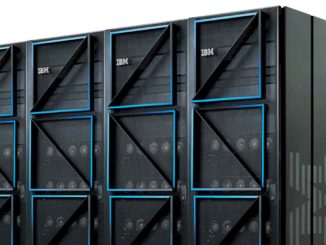
When enterprises talk about cloud computing, they invariably talk about hybrid and multi-cloud environments. Not all of their workloads will run on Amazon Web Services, Microsoft Azure, Google Cloud Platform – or only on one public cloud, for that matter.
In highly regulated industries like healthcare and financial services, some workloads will run in private clouds hosted by the enterprises themselves for compliance, security, and privacy reasons. Companies that have invested millions of dollars in their datacenters over the years also will want to protect those investments by leveraging them for private clouds. What’s important to them is being able to streamline the management of their public and private cloud environments and to easily move workloads between them.
Enterprises will continue to migrate to the cloud, but they will be hybrid clouds, and major public cloud providers are making moves to ensure they have a foothold in the world of private clouds. Microsoft announced its Azure Stack private cloud a year and a half ago, and this year partners like Dell EMC, Hewlett Packard Enterprise, and Lenovo began shipping the technology to customers. More recently, Google Cloud unveiled a partnership with Cisco Systems are combining resources to create an open hybrid cloud solution designed to ease everything from deploying and managing applications and services across both on-premises environment and Google Cloud.
IBM is now joining the fray. This week, Big Blue rolled out its new IBM Cloud Private software platform that is designed to enable enterprises to develop on-premises private cloud environments to accelerate app development and allow for easier movement of workloads between their private clouds and public clouds – not only the IBM Cloud but also those from other vendors. Similarly, IBM is leaning on open and container-based technologies for enhanced integration and portability of workloads. The IBM Cloud Private platform is built on Kubernetes, an open-source technology for container orchestration, and will support both Docker containers and Cloud Foundry framework.
In addition, IBM officials announced new container-optimized version of such software was WebSphere Liberty Java application server, Db2 database, MQ messaging middleware, and Microservice Builder. In an email to The Next Platform, IBM officials say that the Cloud Private platform “is closely aligned to work with the public IBM Cloud, giving developers a similar user experience and making it easier to connect or even move applications between the IBM public and private clouds. IBM Cloud Private also is designed for easy integration and movement of apps to any public cloud because it’s based on open-container architecture.”
They say the container-optimized software is a differentiator from the efforts of others like Google and Cisco, which also are using Kubernetes as well as Istio, an open platform created by Google to manage and secure microservices. The two also are leveraging Google Container Engine, a managed Kubernetes service.
“IBM Cloud Private also separates itself from other leading solutions with an extensive catalog of containerized services, including IBM WebSphere, Db2 and MQ, to support complex enterprise applications,” they said in the email. “In addition, IBM Cloud Private can be downloaded and implemented as a completely untethered private cloud on both new and existing systems.”
IBM has been vocal about its multi-cloud initiatives and efforts to make it easier for customers to move applications and services around hybrid cloud environments. In mid-October, IBM announced new services designed to reduce the complexity that comes with multi-cloud deployments and drive down the costs associated with enterprises moving to the cloud. The company’s Cloud Migration Services enable customers to leverage automation tools to more efficiently move virtual and physical workloads from any source to the cloud, while the Cloud Deployment Services is a hosted solution that delivers automated provisioning and orchestration to hybrid cloud infrastructures.
The numbers explain why IBM and other public cloud providers are pushing to expand their reach in the private cloud world. Big Blue officials said they expect companies to spend more than $50 billion a year worldwide starting this year to develop private clouds, with the growth rate hitting 15 to 20 percent a year through 2020. Earlier this year, IDC analysts released a survey that indicated that almost 80 percent of large organizations with 1,000 or more employees already have a hybrid cloud strategy in place. In addition, 51.4 percent are using both public and private cloud infrastructures, and 29.2 percent expect to do the same within the next year.
IBM Cloud Private can run on a variety of infrastructures, including the vendor’s own mainframe and Power systems, its hyperconverged infrastructure that runs Nutanix software, and IBM Storage’s Spectrum Access solution. In addition, it can run on systems from Dell EMC, Lenovo, Cisco Systems and NetApp, and can be deployed by such VMware, Canonical and other OpenStack distributions as well as bare-metal systems. The private cloud platform also includes such developer services for data analytics as Db2, Db2 Warehouse, PostgreSQL and MongoDB, developer tools like Netcool, UrbanCode, and Cloud Brokerage and open-source management software such as Jenkins, Prometheus, Grafana, and ElasticSearch.
Other technologies in the platform include streamlined management across multiple clouds, Security Vulnerability Advisor for continuous scanning of containers across the cloud, encryption of all data in flight and strict access controls by the customer within a cluster.
IBM says that customers have two ways of paying for the private cloud platform. They expect most will choose a flexible model in which they pay for the capacity they need on a monthly basis, with the ability to change the capacity. The other option is paying upfront for a perpetual software license.





Be the first to comment